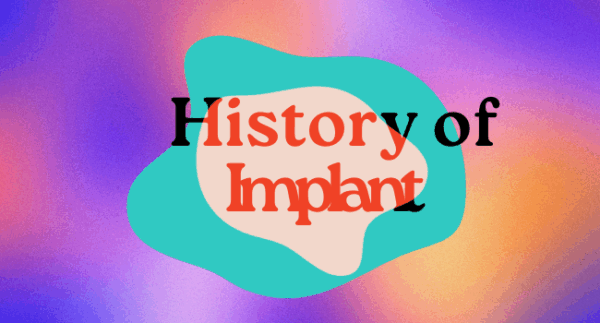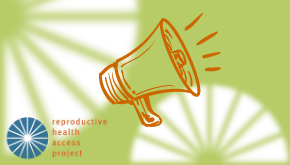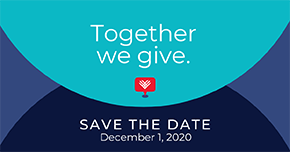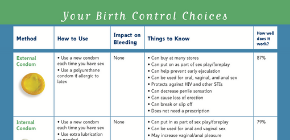Aug 14

Help Us Protect Access to Sexual and Reproductive Health Care Today!

This contentious presidential election has taken place in the context of an ongoing revolution for Black, Brown, and Indigenous lives, in a world severely threatened by climate change, an economic depression, and during a pandemic that continues to rage on. 2020 has been a difficult year for many, and we have all faced new challenges in how we live, work, and care for our families, loved ones, and patients.
We recognized that much hinged on this election, from racial justice to immigration to environmental justice, health care, education, disability rights, LGBTQIA+ rights, reproductive justice, and so, so much more. It will take time and effort to not only undo the harms done by the outgoing administration, but to be a more equitable and just society than we have ever been.
The outcome of this election is thanks to the tireless work of BIPOC organizers and activists, especially Black women in the South, Midwest, and Southeast, who have for centuries led grassroots movements to disrupt white supremacy and fight for justice. It has never been clearer that our imperative moving forward is to center BIPOC lived experiences in the work that we do. For some of us at RHAP, that means taking more time to look internally and examine our own biases and positions of power. As an organization, that means ensuring that our strategic plan centers racial justice and that our organizational structure includes all voices in this movement. There is work to be done, and if we learned anything this year, it’s that there’s no going back to business as usual.
We will hold the Biden-Harris Administration accountable to center true reproductive freedom and to follow through on the promises they have made regarding health care, especially reproductive health care. This includes protecting the Affordable Care Act, removing the global gag rule, ending the Hyde Amendment, codifying Roe v. Wade, reinstating the contraceptive mandate, and much more.
Moving forward, RHAP reaffirms the core values that guide our work. We are also committed to the following actions to ensure that our work is inclusive and centers the needs of the communities we serve:
We count on you to work with us to make our vision a reality.

“This was the first time I was able to participate in the AAFP Congress of Delegates (COD) as a student member, and it was incredibly valuable. The experience gave me insight into what my future can look like as a physician-advocate. The highlights for me included listening to physicians share patient stories and hearing my family medicine role models testify to support resolutions calling for better treatment of asylum seekers and full-spectrum reproductive care for incarcerated people.”
– Melissa Hill, AAFP Student Member, Fourth-year Medical Student, and North Carolina Cluster Member.
Mobilizing clinicians and students from across the nation to advocate for comprehensive reproductive health care and justice within one of the largest professional organizations in medicine- the American Academy of Family Physicians (AAFP) – looked different this year, but was nonetheless inspiring. There was a range of issues Network members passionately defended on behalf of their patients and communities. The five resolutions our RHAP organizing efforts focused on included: Improve Quality of Reproductive Healthcare for Incarcerated People, End Race-Based Medicine, Support the Provision of Gender-Affirming Health Care for Transgender Youth, End Police Brutality and Reinvest in Public Health, and Close the US Detention Centers, Provide Humane Care to Migrants.
Transitioning from in person-meetings to virtual proceedings was not without obstacles, but the virtual platform provided an accessible space for members to engage. Over 300 written testimonies were submitted in support of our prioritized resolutions. Despite technical difficulties and Congress of Delegates procedures limiting members’ input, over 20 Network members from 13 states gave oral testimony. Our amazing advocates squeezed late-night testimonies in between shifts, cultivated colleague engagement, and demonstrated the power of organizing in community – especially during these socially distant times.
Our advocacy within the AAFP is grounded in RHAP’s organizational values and mission to make reproductive health care accessible to all. In order to make this vision a reality, our administrative advocacy efforts must encompass intersecting issues that impact access to equitable health care. As a Senior Organizer on the Network Team, I am excited to see the AAFP continue to develop as a platform for our Network members to amplify issues important to them and their patients. There is still a lot of work to be done, but our community of primary care clinicians continues to grow and push the AAFP to go beyond the buzzwords of “health equity” and live up to its vision of optimal health care for all.
This article was written by Hailey Broughton-Jones, Senior Organizer on the Reproductive Health Access Network.

Give a gift this #GivingTuesday, December 1, to mobilize, train, and support primary care clinicians to expand access to abortion, contraception, and miscarriage care for everyone. The clinicians we work with are on the frontlines fighting this global pandemic. We are helping them provide safe access to reproductive health care.
As we near the end of 2020, we reflect on the progress that has been made in reproductive health care and the work that is still ahead. With the support from our generous donors, all gifts to the Reproductive Health Access Project on #GivingTuesday will directly support our work to expand access to reproductive health care.
Having access to reproductive health care means getting the health care you need, creating the family you want if and when you want it, and being in control of your body. A donation to RHAP ensures that we can continue to train and support clinicians to make reproductive health care accessible to everyone, everywhere in the United States.
Every dollar counts!! Whether it is $50, $100, or $250, your support today will make a difference towards access to reproductive health care. Thanks to our amazing supporters, donations by new donors will be matched dollar-for-dollar, up to $20,000, by December 31. So, mark your calendars for December 1 to help integrate abortion, contraception, and miscarriage care into primary care practice by donating to RHAP on #GivingTuesday!
If you have any questions, please contact our Manager of Individual Giving, Victoria Pittl.
As always, your support keeps us inspired!

Many people come to know RHAP through our resources and the “Your Birth Control Choices” fact sheet is one of our most popular resources. Each year, RHAP picks one content area – abortion, miscarriage, or contraception – and goes through all of our resources to determine what needs updating, what we’re missing, and how we can expand. This year we are working on our contraception resources and we started with the “Your Birth Control Choices” fact sheet.
Reproductive Justice advocates have highlighted the need to think carefully about how health care providers discuss and present contraceptive options. We know that people make decisions on which contraception to use based on so many different factors – hormones, ease of use, feeling in control of the method, efficacy, cost, accessibility, impact on sex life and bleeding, and more. Generally, when you look around at the fact sheets available on contraception, the methods are in order of efficacy, with LARC methods at the top. This can signal to patients that certain methods are, overall, “better” than others. However, we all know that the best method of contraception is the one that you will use consistently and that feels right to you. We felt that ordering our fact sheet by efficacy might be playing into some of these influential, or even coercive, forces so we, very intentionally, looked at how we structured this fact sheet.
We started this exploratory process by first speaking with a consultant working in the Reproductive Justice field. They were extremely helpful in providing feedback, a new frame to look at this resource, and some starting points to help reformat the organization of the sheet. We also elicited feedback from over 35 individuals from around the country to see what they liked and did not like about our sheet. We asked questions about possible changes that we were thinking of making to the format and information included. Once we created a draft that included all of this feedback, we put it through our standard field testing processes. We included the additional feedback from field testing, and that is the version you see today on our website.
Some of the changes we made included:
We believe the changes we have made better reflect our values and the information that patients are looking for when making a decision around contraception. We hope that, after getting acquainted with the new format, you will come to love and use this resource as you did the previous iteration. These changes were also the result of listening to requests from the community, which we will continue to do! If you would like to send us your feedback or any questions about the new version of “Your Birth Control Choices,” please reach out! You can also check out our Contraceptive Pearl on the edits.
Your gift allows us to train and support health care providers across the United States so they can offer patients compassionate and comprehensive care.
Aug 14
